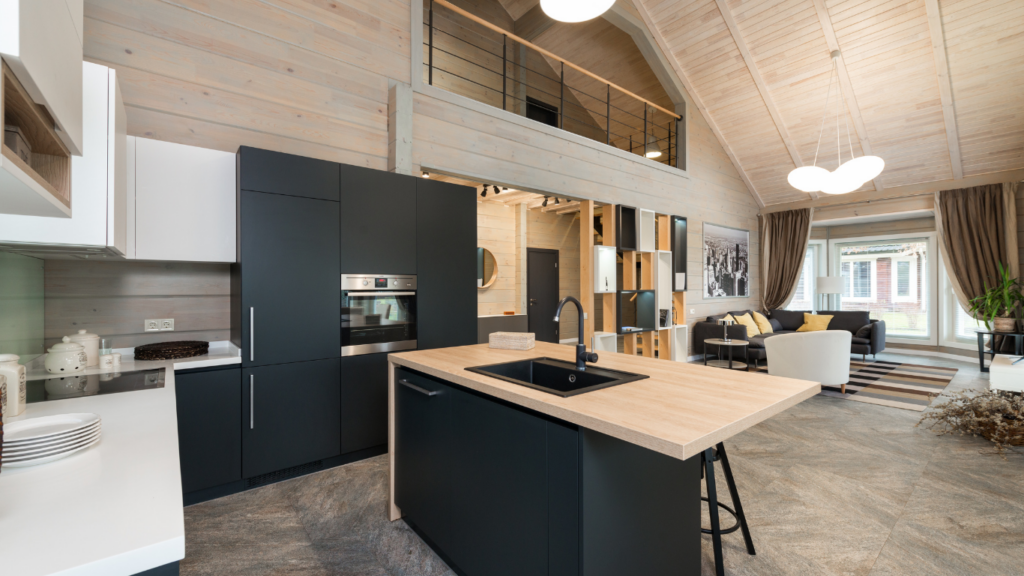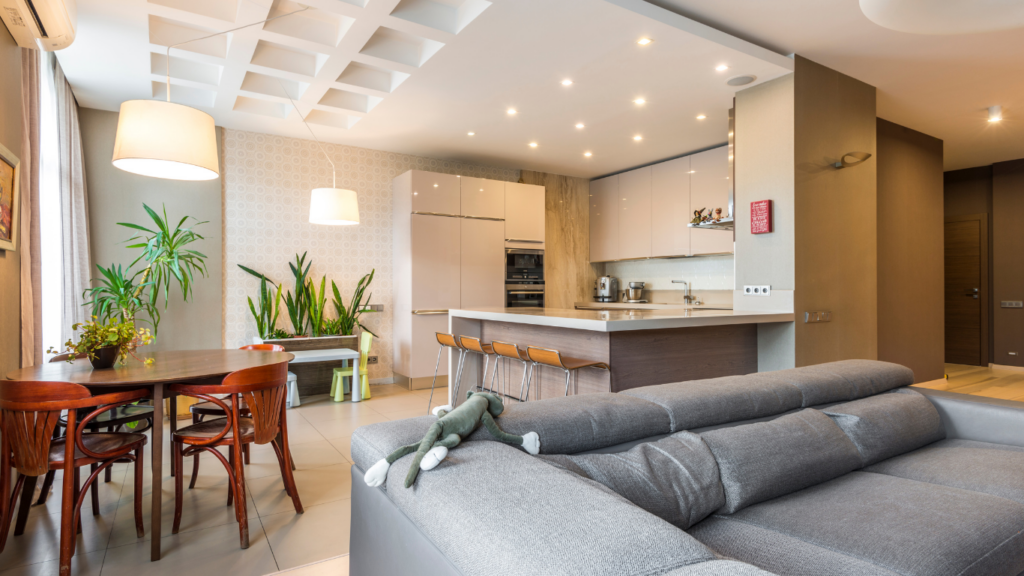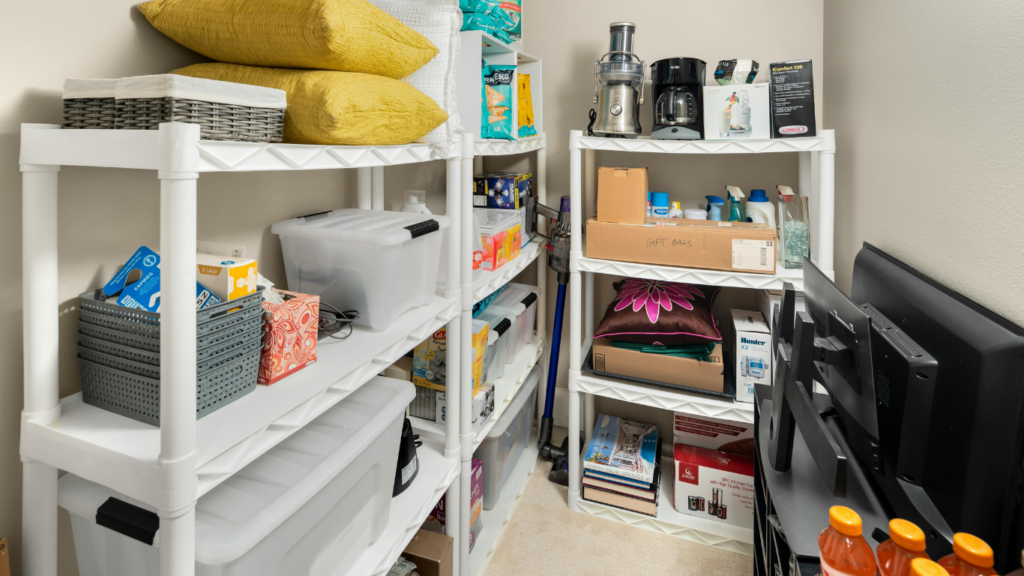Creating a calming nesting atmosphere at home can transform your space into a sanctuary. I’ve discovered that the right combination of scent, sound, and light plays a crucial role in crafting an environment that promotes relaxation and well-being.
By tapping into these sensory elements, I can enhance my daily routine and provide a comforting retreat from the chaos of the outside world. Imagine walking into a room filled with soothing aromas, gentle sounds, and soft lighting.
It’s not just about aesthetics; it’s about creating a holistic experience that nurtures the mind and spirit. In this article, I’ll explore how to harness these sensory elements to cultivate a peaceful haven where you can unwind and recharge. Let’s dive into the world of scent, sound, and light and discover how to make your home a true calming nest.
The Importance of Atmosphere in Home Design
Creating a calming atmosphere at home significantly influences well-being. The right ambiance can reduce stress, improve mood, and enhance relaxation. Research shows that an inviting environment fosters emotional stability, making it essential in home design.
I focus on three primary sensory elements: scent, sound, and light. Each element plays a unique role in shaping the atmosphere.
Scent
Scent influences both mood and behavior. Aromas like lavender and chamomile promote relaxation, while citrus scents can energize. Incorporating essential oils or scented candles can enhance the calming effect and create a personal sanctuary.
Sound
Sound contributes to a tranquil environment. Soft music or natural sounds, like ocean waves and birds chirping, create a soothing backdrop. Noise reduction strategies, such as soundproofing or using rugs, also help minimize distractions, fostering a peaceful space.
Light
Light affects mood and energy levels. Soft, warm lighting, such as that from dimmable lamps or candles, promotes feelings of safety and comfort. Natural light exposure during the day enhances alertness, while adjustable window treatments help control intensity.
Incorporating these elements effectively transforms any space into a sanctuary. Prioritizing atmosphere in home design leads to lasting benefits for mental health and overall quality of life.
Scent: The Power of Aromatherapy
Aromatherapy plays a vital role in establishing a calming atmosphere at home. Utilizing specific scents can promote relaxation, reduce stress, and improve overall well-being.
Essential Oils for Relaxation
I often turn to essential oils to cultivate a peaceful environment. The following oils are particularly effective for relaxation:
- Lavender: Known for its calming properties, lavender oil reduces anxiety and promotes sleep.
- Bergamot: This citrus scent uplifts mood and alleviates stress.
- Chamomile: Chamomile oil relaxes the mind and body, promoting tranquility.
- Frankincense: This ancient oil enhances mindfulness and encourages emotional balance.
- Sandalwood: With its earthy aroma, sandalwood calms the nervous system.
Blending these essential oils in a diffuser or adding them to a warm bath creates a soothing experience.
Creating a Signature Scent
Crafting a signature scent personalizes the home environment. Here are steps to develop a unique aroma:
- Identify preferred scents: Consider scents that evoke positive memories, like citrus or floral notes.
- Experiment with blends: Combine different essential oils to create a harmonious blend that resonates.
- Test the aroma: Diffuse the blend in small areas to gauge its impact on mood and comfort.
- Adjust as necessary: Modify the ratio of oils until achieving the desired scent profile.
Creating a signature scent not only enhances the home’s ambiance but also establishes a unique olfactory identity that fosters relaxation and comfort.
Sound: Crafting a Serene Soundscape
Sound plays a vital role in shaping a calming atmosphere at home. By curating an intentional sound environment, I can enhance relaxation and promote emotional well-being.
Nature Sounds and Their Benefits
Nature sounds, such as rain, ocean waves, and rustling leaves, create a tranquil backdrop that mimics the outdoors. Research indicates that these sounds reduce stress and anxiety levels.
Listening to nature sounds can lower heart rates and enhance cognitive function. I often incorporate sound machines or streaming services to bring these calming auditory experiences indoors. Adding nature-inspired elements, like indoor water fountains or plants, can further amplify these soothing effects.
Choosing the Right Music
Selecting the right music can significantly influence mood and create a serene atmosphere. Soft instrumental music, such as classical or ambient tracks, promotes relaxation. Studies show that listening to calming music can improve emotional health.
When curating my playlist, I prioritize slow tempos and gentle melodies. I avoid songs with lyrics that might provoke intense emotions. Using a speaker with good sound quality ensures clarity, enhancing the overall listening experience. By experimenting with different genres and artists, I can find the perfect soundscape that fosters tranquility and peace at home.
Light: Harnessing Natural and Artificial Light
Light impacts mood, productivity, and overall well-being. Proper lighting can create a calming atmosphere at home, enhancing the nesting experience.
The Role of Lighting in Mood
Lighting significantly influences emotions and behavior. Soft, warm light fosters relaxation and comfort. Exposure to natural light boosts alertness and energizes, promoting a positive disposition.
Bright, harsh lighting can induce stress, leading to irritability. By choosing the right lighting, I can create a soothing ambiance that enhances my daily routines and nurtures mental health.
Tips for Soft and Warm Lighting
- Use Dimmable Fixtures: Dimmable lights allow for flexibility, offering adjustable brightness for various activities and moods.
- Incorporate Soft Bulbs: Soft white or warm LED bulbs emit a gentle glow, helping to create a more inviting environment.
- Layer Lighting: Combine ambient, task, and accent lighting for a multi-dimensional effect that enhances comfort.
- Add Candles: Candles provide soft illumination and contribute to a serene atmosphere through their flicker and warmth.
- Utilize Natural Sources: Maximize natural light during the day by opening curtains and blinds. Position mirrors strategically to bounce light and brighten the space.
- Install Warm-Miscellaneous: Using colored bulbs with warm tones in lamps creates a cozy vibe in the room.
By implementing these lighting strategies, I can cultivate a tranquil nesting atmosphere that promotes relaxation and well-being.
Integrating Scent, Sound, and Light
Creating a calming atmosphere requires careful integration of scent, sound, and light. Coordinating these sensory elements can enhance relaxation and well-being within my home.
Coordinating Your Elements for a Holistic Approach
I focus on balancing scent, sound, and light to create a holistic environment.
- Scent Selection: I choose essential oils that align with my mood. Lavender promotes calmness, while citrus scents invigorate. I swap aromas based on daily needs.
- Soundscapes: I curate playlists featuring soft instrumental music and nature sounds. Integrating white noise machines helps drown out distractions, ensuring a serene backdrop.
- Lighting Techniques: I use warm-colored bulbs and dimmable fixtures to control brightness. Layering ambient, task, and accent lighting creates depth and enhances comfort.
- Experiential Grounding: I maintain consistent themes across the three elements, ensuring that scents, sounds, and lights harmonize. For instance, if I choose forest scents, I accompany them with sounds of rustling leaves and use soft green lighting.
- Personalization: I experiment with combinations of these elements to find what resonates best. Testing different blends and observing their impact on my mood allows me to refine the atmosphere.
By coordinating scent, sound, and light effectively, I create a cohesive and calming environment that nurtures both mind and body.



